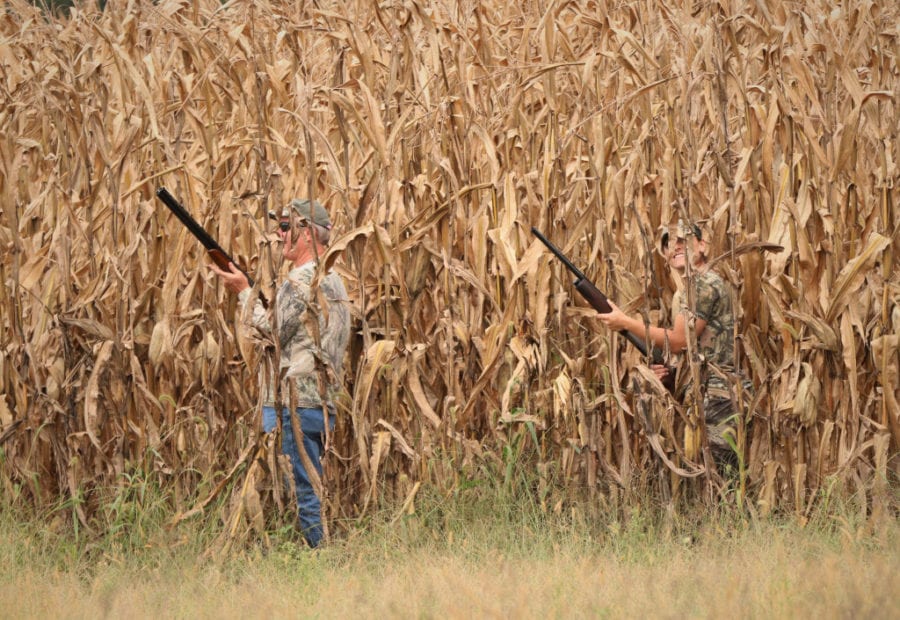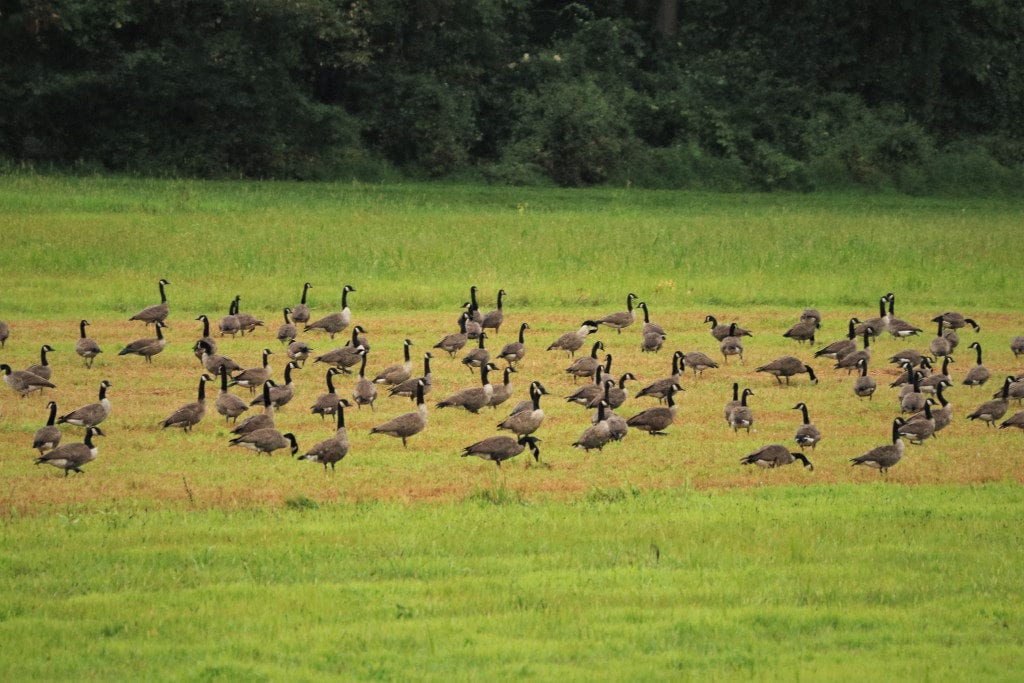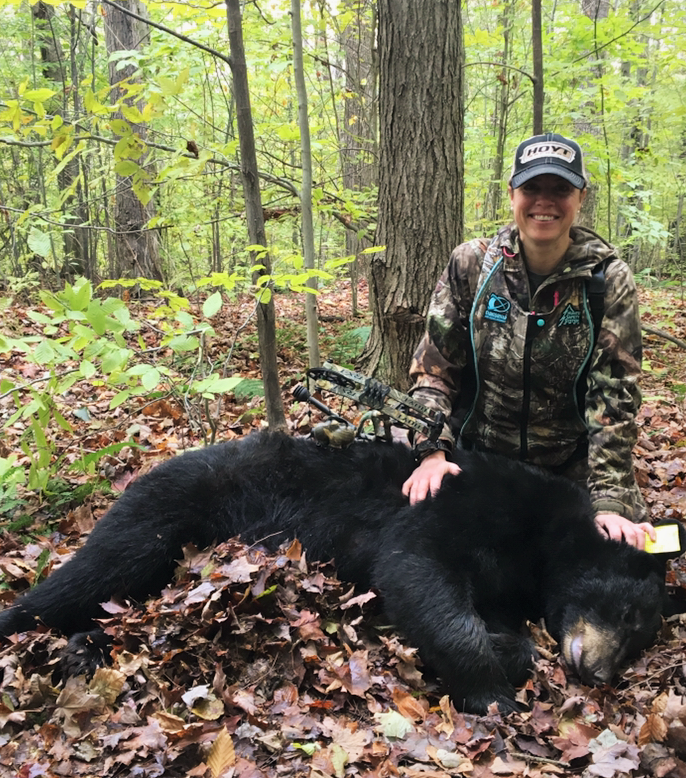By Tyler Frantz
With one subtle flip of a calendar page, the 2019-2020 hunting seasons are born. The long awaited September migratory bird openers mark the official commencement of Pennsylvania’s fall hunting opportunities. As camo-clad hunters flock to farm fields in pursuit of resident Canada Geese and Mourning Doves, a long summer lull is rapidly exchanged for exciting wing-shooting action- a welcomed reprieve for many.
There’s something rejuvenating about spending a misty morning in a goose blind or an evening with friends watching doves dart across the distant horizon of a September sunset sky. It reunites us with our passion for the outdoors and lifts our spirits after a dull, lingering off-season that seemingly lasted forever.
Doves in particular tend to provide plenty of shot opportunities- some of which can humble even the most skilled shooters afield. Their speed likens them to winged-torpedoes, and many a hunter can easily burn through a box of shells with scant bounty to show for it.
Despite its challenging nature, however, dove hunting can be an incredibly thrilling pursuit for those who know how to tip the odds in their favor. By being in the right position and knowing the natural tendencies of these speedy migrators, hunters can greatly increase their chances of acquiring a delicious spread of wild dove breasts for their next backyard barbecue.
As in the business world, “location is everything” when it comes to dove hunting. Acquiring the knowledge of where doves want to be, and thus, where hunters should be at the onset of their hunt, is as simple as doing a little homework. A casual evening drive through the country is all it takes to confirm a prospective dove hotspot, but it’s also important to know the best areas to target along the way.
For doves, there are a number of key ingredients that make a particular location more desirable than others. Birds as they are, doves require a place to roost, a place to feed, and both grit and water to help aide digestion. Find the right combination of these ingredients, and you’ve got a consistent recipe for success.

In early fall, doves are heavy feeders. They seem to prefer freshly cut grain fields above all else. Standing corn, soybeans, alfalfa, sorghum, sunflower and foxtail will all attract doves, but not nearly as much as if it were lying on the ground. Locating farms that are currently in the process of harvesting fields can be a goldmine, as alternately cut rows will provide feed for the birds, while standing crops will provide cover and concealment for hunters.
Dirt or gravel farm lanes provide an excellent source of grit for doves to break down the hard seeds that compose a large portion of their daily diet. Likewise, small streams or retention ponds also provide a prime water source for hydration, and farms with a combination of both should be given a good look during scouting trips.
Doves love to roost on power lines or along tree-lined fencerows, often giving preference to solitary cherries or black walnuts. Many times, they will make a temporary rest stop when traversing from one field to the next, pausing briefly to survey their surroundings or call in some friends.
It is not uncommon to see a half dozen or more doves congregated on the same roost tree or power line at any given hour of the evening. Pinpointing these locations is helpful because they serve as natural fly zones where birds will consistently gather, or in the least, pass by somewhat regularly. These hotspots should be considered prime setup sites.
After locating a property holding a fair number of birds, it is important to ask permission of the landowner in a polite and respectful manner. This is best done in person, and one should always adhere to any special guidelines or requests an owner may have for hunting the property.
Make sure to clarify property boundaries, and be aware of any buildings or livestock that could be obscured by standing crops or vegetation. Safety and respect of the land should always be the number one priority.
On the day of the hunt, pack a couple bottles of water, perhaps a few snacks, and more shells than you think you’ll ever possibly need; even so, you may still run out. Low brass 7-shot game loads or even 8-shot target loads in 12- or 20-gauge will do the trick without breaking the bank for the number of spent shells in an outing.

See how the blue jeans catch your attention? Photo by Derek Stoner.
Wearing camouflage or muted colors to match surroundings is suggested, as is having a comfortable cushion or five-gallon bucket for seating. Nestle into some cover with the sun at your back near roosting sites that overlook frequently visited grain fields. It can even be helpful to place a few inexpensive decoys within shooting range to help draw the attention of incoming birds.
Passing overhead shots can be extremely tricky and require plenty of lead-time. Try to match the bird’s speed with the bead of the barrel and then pass it out by a few feet, squeezing the trigger while continuing to follow through. As the bird drops, be sure to keep a good mark on it and retrieve it as soon as possible to ensure a recovery. Then, cool down the meat quickly to preserve quality.
Dove hunting can be an extremely enjoyable pursuit- one that is enhanced by the company of a good dog or good friends. And if you’re fortunate enough to bag a few birds, the breasts taste great marinated and wrapped with bacon, cheddar and jalapeño over a fiery grill. Here’s to a successful start to the season!
Tyler Frantz is an avid hunter, outdoor writer and video producer based in central Pennsylvania. His work may be found at: NaturalPursuitOutdoors.com
The views expressed by the editors, authors or users of this linked article are expressly theirs, and do not necessarily reflect the policies or opinions of Dallas Safari Club Northeast, its employees, members or assigns. Any concerns about a site user’s post should be addressed appropriately to that person. Any concerns about an advertiser, a user or any content on this site should be addressed to contact@dscnortheast.org.




